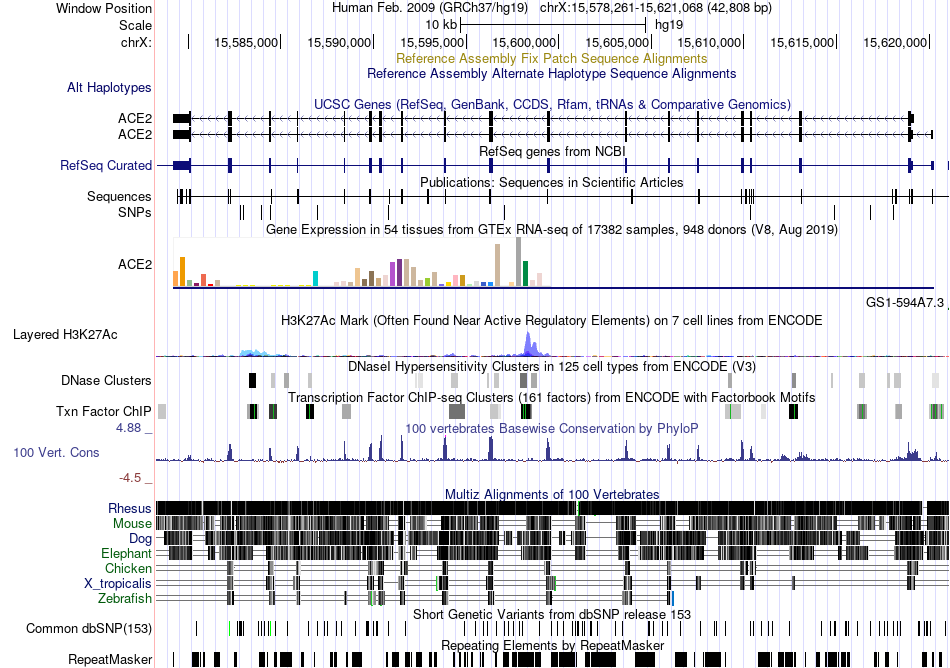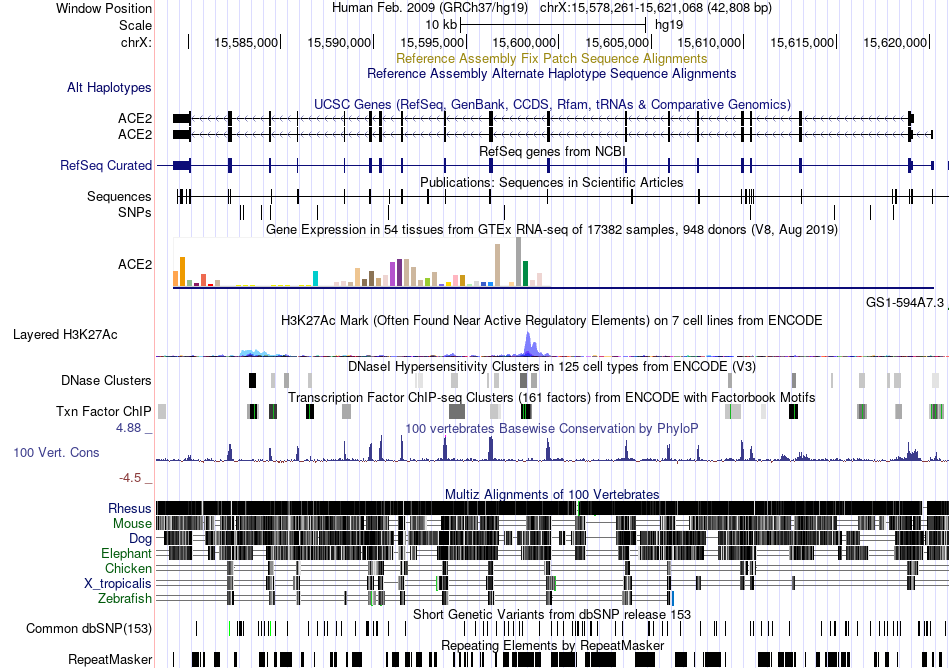| UTHEALTH HOME ABOUT SBMI A-Z WEBMAIL INSIDE THE UNIVERSITY |

|
|||||||
|
Fusion Protein:C16orf70-ATP6V0D1 |
Fusion Protein Summary |
 Fusion gene summary Fusion gene summary |
| Fusion partner gene information | Fusion gene name: C16orf70-ATP6V0D1 | FusionPDB ID: 11018 | FusionGDB2.0 ID: 11018 | Hgene | Tgene | Gene symbol | C16orf70 | ATP6V0D1 | Gene ID | 80262 | 9114 |
| Gene name | chromosome 16 open reading frame 70 | ATPase H+ transporting V0 subunit d1 | |
| Synonyms | C16orf6|LIN10|lin-10 | ATP6D|ATP6DV|P39|VATX|VMA6|VPATPD | |
| Cytomap | 16q22.1 | 16q22.1 | |
| Type of gene | protein-coding | protein-coding | |
| Description | UPF0183 protein C16orf70lin-10 homolog | V-type proton ATPase subunit d 132 kDa accessory proteinATPase, H+ transporting, lysosomal (vacuolar proton pump), member DATPase, H+ transporting, lysosomal 38kDa, V0 subunit d1H(+)-transporting two-sector ATPase, subunit DV-ATPase 40 KDa accessory | |
| Modification date | 20200313 | 20200313 | |
| UniProtAcc | Q9BSU1 | P61421 | |
| Ensembl transtripts involved in fusion gene | ENST ids | ENST00000569683, ENST00000219139, ENST00000569600, | ENST00000290949, ENST00000540149, ENST00000602876, ENST00000567694, |
| Fusion gene scores for assessment (based on all fusion genes of FusionGDB 2.0) | * DoF score | 10 X 8 X 8=640 | 8 X 7 X 4=224 |
| # samples | 12 | 8 | |
| ** MAII score | log2(12/640*10)=-2.41503749927884 possibly effective Gene in Pan-Cancer Fusion Genes (peGinPCFGs). DoF>8 and MAII<0 | log2(8/224*10)=-1.48542682717024 possibly effective Gene in Pan-Cancer Fusion Genes (peGinPCFGs). DoF>8 and MAII<0 | |
| Context (manual curation of fusion genes in FusionPDB) | PubMed: C16orf70 [Title/Abstract] AND ATP6V0D1 [Title/Abstract] AND fusion [Title/Abstract] | ||
| Most frequent breakpoint (based on all fusion genes of FusionGDB 2.0) | C16orf70(67144142)-ATP6V0D1(67487618), # samples:1 | ||
| Anticipated loss of major functional domain due to fusion event. | |||
| * DoF score (Degree of Frequency) = # partners X # break points X # cancer types ** MAII score (Major Active Isofusion Index) = log2(# samples/DoF score*10) |
 Gene ontology of each fusion partner gene with evidence of Inferred from Direct Assay (IDA) from Entrez Gene ontology of each fusion partner gene with evidence of Inferred from Direct Assay (IDA) from Entrez |
| Partner | Gene | GO ID | GO term | PubMed ID |
 Fusion gene breakpoints across C16orf70 (5'-gene) Fusion gene breakpoints across C16orf70 (5'-gene)* Click on the image to open the UCSC genome browser with custom track showing this image in a new window. |
 |
 Fusion gene breakpoints across ATP6V0D1 (3'-gene) Fusion gene breakpoints across ATP6V0D1 (3'-gene)* Click on the image to open the UCSC genome browser with custom track showing this image in a new window. |
 |
Top |
Fusion Gene Sample Information |
 Fusion gene information from FusionGDB2.0. Fusion gene information from FusionGDB2.0. |
 Fusion gene information from two resources (ChiTars 5.0 and ChimerDB 4.0) Fusion gene information from two resources (ChiTars 5.0 and ChimerDB 4.0)* All genome coordinats were lifted-over on hg19. * Click on the break point to see the gene structure around the break point region using the UCSC Genome Browser. |
| Source | Disease | Sample | Hgene | Hchr | Hbp | Hstrand | Tgene | Tchr | Tbp | Tstrand |
| ChimerDB4 | STAD | TCGA-VQ-A8PD | C16orf70 | chr16 | 67144142 | + | ATP6V0D1 | chr16 | 67487618 | - |
Top |
Fusion ORF Analysis |
 Fusion information from ORFfinder translation from full-length transcript sequence from FusionPDB. Fusion information from ORFfinder translation from full-length transcript sequence from FusionPDB. |
| Henst | Tenst | Hgene | Hchr | Hbp | Hstrand | Tgene | Tchr | Tbp | Tstrand | Seq length (transcript) | BP loci (transcript) | Predicted start (transcript) | Predicted stop (transcript) | Seq length (amino acids) |
| ENST00000569600 | C16orf70 | chr16 | 67144142 | + | ENST00000290949 | ATP6V0D1 | chr16 | 67487618 | - | 1583 | 148 | 0 | 1073 | 357 |
| ENST00000569600 | C16orf70 | chr16 | 67144142 | + | ENST00000540149 | ATP6V0D1 | chr16 | 67487618 | - | 1249 | 148 | 0 | 1196 | 398 |
| ENST00000219139 | C16orf70 | chr16 | 67144142 | + | ENST00000290949 | ATP6V0D1 | chr16 | 67487618 | - | 1687 | 252 | 143 | 1177 | 344 |
| ENST00000219139 | C16orf70 | chr16 | 67144142 | + | ENST00000540149 | ATP6V0D1 | chr16 | 67487618 | - | 1353 | 252 | 143 | 1300 | 385 |
 DeepORF prediction of the coding potential based on the fusion transcript sequence of in-frame fusion genes. DeepORF is a coding potential classifier based on convolutional neural network by comparing the real Ribo-seq data. If the no-coding score < 0.5 and coding score > 0.5, then the in-frame fusion transcript is predicted as being likely translated. DeepORF prediction of the coding potential based on the fusion transcript sequence of in-frame fusion genes. DeepORF is a coding potential classifier based on convolutional neural network by comparing the real Ribo-seq data. If the no-coding score < 0.5 and coding score > 0.5, then the in-frame fusion transcript is predicted as being likely translated. |
| Henst | Tenst | Hgene | Hchr | Hbp | Hstrand | Tgene | Tchr | Tbp | Tstrand | No-coding score | Coding score |
| ENST00000569600 | ENST00000290949 | C16orf70 | chr16 | 67144142 | + | ATP6V0D1 | chr16 | 67487618 | - | 0.008073318 | 0.99192667 |
| ENST00000569600 | ENST00000540149 | C16orf70 | chr16 | 67144142 | + | ATP6V0D1 | chr16 | 67487618 | - | 0.002407536 | 0.9975924 |
| ENST00000219139 | ENST00000290949 | C16orf70 | chr16 | 67144142 | + | ATP6V0D1 | chr16 | 67487618 | - | 0.006527773 | 0.9934722 |
| ENST00000219139 | ENST00000540149 | C16orf70 | chr16 | 67144142 | + | ATP6V0D1 | chr16 | 67487618 | - | 0.002942846 | 0.9970572 |
Top |
Fusion Amino Acid Sequences |
 For individual full-length fusion transcript sequence from FusionPDB, we ran ORFfinder and chose the longest ORF among the all predicted ones. For individual full-length fusion transcript sequence from FusionPDB, we ran ORFfinder and chose the longest ORF among the all predicted ones. |
| >FusionGDB ID_FusionGDB isoform ID_FGname_Hgene_Hchr_Hbp_Henst_Tgene_Tchr_Tbp_Tenst_length(fusion AA) seq_BP >11018_11018_1_C16orf70-ATP6V0D1_C16orf70_chr16_67144142_ENST00000219139_ATP6V0D1_chr16_67487618_ENST00000290949_length(amino acids)=344AA_BP=36 MRCRREAARARRAEPMLDLEVVPERSLGNEQWEFTLDLKLHLQSTDYGNFLANEASPLTVSVIDDRLKEKMVVEFRHMRNHAYEPLASFL DFITYSYMIDNVILLITGTLHQRSIAELVPKCHPLGSFEQMEAVNIAQTPAELYNAILVDTPLAAFFQDCISEQDLDEMNIEIIRNTLYK AYLESFYKFCTLLGGTTADAMCPILEFEADRRAFIITINSFGTELSKEDRAKLFPHCGRLYPEGLAQLARADDYEQVKNVADYYPEYKLL -------------------------------------------------------------- >11018_11018_2_C16orf70-ATP6V0D1_C16orf70_chr16_67144142_ENST00000219139_ATP6V0D1_chr16_67487618_ENST00000540149_length(amino acids)=385AA_BP=36 MRCRREAARARRAEPMLDLEVVPERSLGNEQWEFTLDLKLHLQSTDYGNFLANEASPLTVSVIDDRLKEKMVVEFRHMRNHAYEPLASFL DFITQESEAGTPEGPGNMPKLGSRPSPGHRPPFLRVSLLPWPPSSYSYMIDNVILLITGTLHQRSIAELVPKCHPLGSFEQMEAVNIAQT PAELYNAILVDTPLAAFFQDCISEQDLDEMNIEIIRNTLYKAYLESFYKFCTLLGGTTADAMCPILEFEADRRAFIITINSFGTELSKED RAKLFPHCGRLYPEGLAQLARADDYEQVKNVADYYPEYKLLFEGAGSNPGDKTLEDRFFEHEVKLNKLAFLNQFHFGVFYAFVKLKEQEC -------------------------------------------------------------- >11018_11018_3_C16orf70-ATP6V0D1_C16orf70_chr16_67144142_ENST00000569600_ATP6V0D1_chr16_67487618_ENST00000290949_length(amino acids)=357AA_BP=49 LPPLPRLLQLGSLLRCRREAARARRAEPMLDLEVVPERSLGNEQWEFTLDLKLHLQSTDYGNFLANEASPLTVSVIDDRLKEKMVVEFRH MRNHAYEPLASFLDFITYSYMIDNVILLITGTLHQRSIAELVPKCHPLGSFEQMEAVNIAQTPAELYNAILVDTPLAAFFQDCISEQDLD EMNIEIIRNTLYKAYLESFYKFCTLLGGTTADAMCPILEFEADRRAFIITINSFGTELSKEDRAKLFPHCGRLYPEGLAQLARADDYEQV -------------------------------------------------------------- >11018_11018_4_C16orf70-ATP6V0D1_C16orf70_chr16_67144142_ENST00000569600_ATP6V0D1_chr16_67487618_ENST00000540149_length(amino acids)=398AA_BP=49 LPPLPRLLQLGSLLRCRREAARARRAEPMLDLEVVPERSLGNEQWEFTLDLKLHLQSTDYGNFLANEASPLTVSVIDDRLKEKMVVEFRH MRNHAYEPLASFLDFITQESEAGTPEGPGNMPKLGSRPSPGHRPPFLRVSLLPWPPSSYSYMIDNVILLITGTLHQRSIAELVPKCHPLG SFEQMEAVNIAQTPAELYNAILVDTPLAAFFQDCISEQDLDEMNIEIIRNTLYKAYLESFYKFCTLLGGTTADAMCPILEFEADRRAFII TINSFGTELSKEDRAKLFPHCGRLYPEGLAQLARADDYEQVKNVADYYPEYKLLFEGAGSNPGDKTLEDRFFEHEVKLNKLAFLNQFHFG -------------------------------------------------------------- |
Top |
Fusion Protein Functional Features |
 Four levels of functional features of fusion genes Four levels of functional features of fusion genesGo to FGviewer search page for the most frequent breakpoint (https://ccsmweb.uth.edu/FGviewer/chr16:67144142/chr16:67487618) - FGviewer provides the online visualization of the retention search of the protein functional features across DNA, RNA, protein, and pathological levels. - How to search 1. Put your fusion gene symbol. 2. Press the tab key until there will be shown the breakpoint information filled. 4. Go down and press 'Search' tab twice. 4. Go down to have the hyperlink of the search result. 5. Click the hyperlink. 6. See the FGviewer result for your fusion gene. |
 |
 Main function of each fusion partner protein. (from UniProt) Main function of each fusion partner protein. (from UniProt) |
| Hgene | Tgene |
| C16orf70 | ATP6V0D1 |
| FUNCTION: Subunit of the integral membrane V0 complex of the lysosomal proton-transporting V-type ATPase (v-ATPase) (PubMed:28296633, PubMed:30374053). V-ATPase is responsible for acidifying a variety of intracellular compartments in eukaryotic cells, thus providing most of the energy required for transport processes in the vacuolar system (PubMed:30374053). May play a role in coupling of proton transport and ATP hydrolysis (By similarity). In aerobic conditions, involved in intracellular iron homeostasis, thus triggering the activity of Fe(2+) prolyl hydroxylase (PHD) enzymes, and leading to HIF1A hydroxylation and subsequent proteasomal degradation (PubMed:28296633). May play a role in cilium biogenesis through regulation of the transport and the localization of proteins to the cilium (By similarity). {ECO:0000250|UniProtKB:P51863, ECO:0000250|UniProtKB:Q6PGV1, ECO:0000269|PubMed:28296633, ECO:0000269|PubMed:30374053}. |
 Retention analysis result of each fusion partner protein across 39 protein features of UniProt such as six molecule processing features, 13 region features, four site features, six amino acid modification features, two natural variation features, five experimental info features, and 3 secondary structure features. Here, because of limited space for viewing, we only show the protein feature retention information belong to the 13 regional features. All retention annotation result can be downloaded at * Minus value of BPloci means that the break pointn is located before the CDS. Retention analysis result of each fusion partner protein across 39 protein features of UniProt such as six molecule processing features, 13 region features, four site features, six amino acid modification features, two natural variation features, five experimental info features, and 3 secondary structure features. Here, because of limited space for viewing, we only show the protein feature retention information belong to the 13 regional features. All retention annotation result can be downloaded at * Minus value of BPloci means that the break pointn is located before the CDS. |
| - Retained protein feature among the 13 regional features. |
| Partner | Gene | Hbp | Tbp | ENST | Strand | BPexon | TotalExon | Protein feature loci | *BPloci | TotalLen | Protein feature | Protein feature note |
| - Not-retained protein feature among the 13 regional features. |
| Partner | Gene | Hbp | Tbp | ENST | Strand | BPexon | TotalExon | Protein feature loci | *BPloci | TotalLen | Protein feature | Protein feature note |
Top |
Fusion Protein-Protein Interaction |
 Go to ChiPPI (Chimeric Protein-Protein interactions) to see the chimeric PPI interaction in Go to ChiPPI (Chimeric Protein-Protein interactions) to see the chimeric PPI interaction in |
 Protein-protein interactors with each fusion partner protein in wild-type from validated records (BIOGRID-3.4.160) Protein-protein interactors with each fusion partner protein in wild-type from validated records (BIOGRID-3.4.160) |
| Gene | PPI interactors |
 Protein-protein interactors based on sequence similarity (STRING) Protein-protein interactors based on sequence similarity (STRING) |
| Gene | STRING network |
| C16orf70 | |
| ATP6V0D1 |
 - Retained interactions in fusion protein (protein functional feature from UniProt). - Retained interactions in fusion protein (protein functional feature from UniProt). |
| Partner | Gene | Hbp | Tbp | ENST | Strand | BPexon | TotalExon | Protein feature loci | *BPloci | TotalLen | Still interaction with |
 - Lost interactions due to fusion (protein functional feature from UniProt). - Lost interactions due to fusion (protein functional feature from UniProt). |
| Partner | Gene | Hbp | Tbp | ENST | Strand | BPexon | TotalExon | Protein feature loci | *BPloci | TotalLen | Interaction lost with |
Top |
Related Drugs to C16orf70-ATP6V0D1 |
 Drugs used for this fusion-positive patient. Drugs used for this fusion-positive patient. (Manual curation of PubMed, 04-30-2022 + MyCancerGenome) |
| Hgene | Tgene | Drug | Source | PMID |
Top |
Related Diseases to C16orf70-ATP6V0D1 |
 Diseases that have this fusion gene. Diseases that have this fusion gene. (Manual curation of PubMed, 04-30-2022 + MyCancerGenome) |
| Hgene | Tgene | Disease | Source | PMID |
 Diseases associated with fusion partners. Diseases associated with fusion partners. (DisGeNet 4.0) |
| Partner | Gene | Disease ID | Disease name | # pubmeds | Source |

